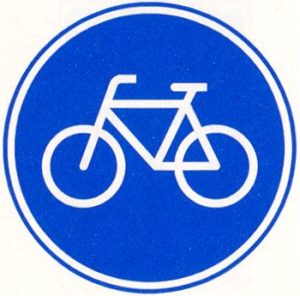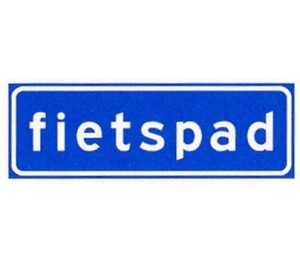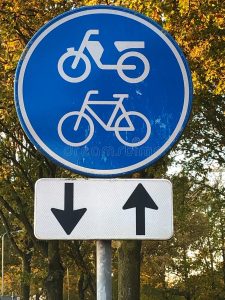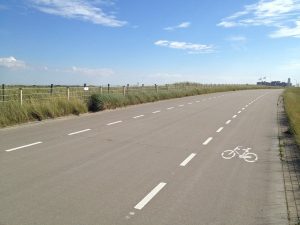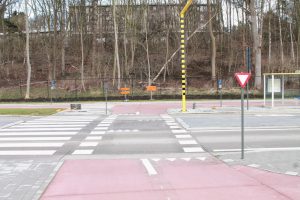Cycling in The Netherlands: starter’s guide
If you are an international student and you don’t come from a major cycling country like me, I am almost sure that cycling in The Netherlands seems like a huge step. But don’t worry! At the beginning I was very nervous too and now I go everywhere with my bike!
Cycling in The Netherlands is well regulated. There is a vast network of cycle paths that will take you everywhere in the country. The cities in The Netherlands are built with cyclists in mind, so it is not a surprise that there are some rules that you need to follow for your own and others’ safety.
Let’s starts with some basic DON’TS to keep you safe while cycling, and to avoid being fined (yes, you can also break the law while riding a bike!):
Don’t ride under the influence (rijden onder invloed)
One of the first things that surprised me when I first got here, is that I saw people riding while being drunk. I mistakenly thought this was allowed. However, it is extremely dangerous. And riding under the influence is actually illegal and you could be fined up to 200 euros.
Don’t use your mobile and cycle
Once you have got the handle of cycling, you might think that it would be a good idea to text your friends that you are on your way to meet them. NO. It is not a good idea. Using your mobile, for any purpose, while cycling is also illegal. It distracts you from the road and you will get a fine too. Hands-free calling and listening to music is allowed. Just make sure that what you are listening to allows you to hear any background noise; so preferably turn off the noise cancellation features. When you park, you may hold and use your phone but not while riding.
Don’t forget your bell and bike lights
It is compulsory for every bike to have a bell. They let you know when someone is behind you and wants to overtake you, or if you’re in the way. It’s also handy to alert those walking on the cycle path (yes, you will have to deal with that too), and much more polite than yelling at people on the road.
Regarding the lights, using a properly attached white or yellow lamp on the front of your bicycle, and a red light on the back is required if you’re riding at night. Not using a lamp can result in a car not seeing you and running you over, or you may cause a deadly accident because the car will try to steer away from you.
Also, no bells = fine, no lights at night = fine.
Don’t park in areas not designated to bikes
If you don’t want your bike to be taken away, charged approximately €30 for a fine and, deal with the municipal government, don’t park your bike in the wrong place. All around Dutch cities and towns you will find a nearby bike stall wherever you are. Believe me, it is better to walk a few minutes more than not having a way back to your room.
Let’s move on to the DO’s, because it is also good to know what you are allowed and should be doing while cycling in The Netherlands:
Cycle only on paths designated for bikes (fietspad)
In The Netherlands, bike paths connect any place and are really well organized. You probably will distinguish a cycle path because of its red color. However, there are many different types of bike paths in the Netherlands.
There are free standing cycle paths: both compulsory (Image 1) and non-obligatory (Image 2) cycle paths and, there is the cycle/moped path combination (Image 3). Then you also have the bike paths that are part of the roadway. These bike paths are called bicycle lanes (Image 4). You have three types: bicycle lanes with solid line, with broken line and bicycle suggestion lanes. The first two have a bicycle symbol painted on the road and cars are not allowed to park or stop there. Only the broken line may be crossed by a motorist.
The right has the right of way
In common practice it is not clear, however if you miss to give the way to who’s coming from right, you’ll fine (yes, many rules, many fines). Even when coming from a minor street it seems weird to make people on the major route stop, or at least slow down. Unless, the people on the right have shark teeth (haaientanden)… yes, you read that right. On the street you will see little, white triangles (Image 5). They indicate that you have to give way to drivers on the intersecting road.
Signal with your arms when you turn
I think this is one of my favorites do’s in The Netherlands. Just like driving a car, it is good to know where the person in front of you is going. It makes the traffic flow smoother and prevents accidents. Unlike cars though, bikes do not have signal lights. Use your arms! If you want to go left or right with your bike, stick your left/right arm accordingly.
(Also, if you do not signal, you might get fined. It’s fun to not be fined, yay!)
Put a lock on your bike
Everyone likes cycling in The Netherlands, this means that everyone wants a bike… even the persons who are willing to steal one. So you better lock your bike, and do it properly! Although there are many types of locks out there, U-locks and/or sturdy chain locks are the best. The proper way to lock your bike is to lock it on a pole or biking rack, and your lock should surround your frame and your tire.
Beware, some municipal governments (gemeente) will fine you for not locking your bike.
I hope this starter’s guide to cycling in the Netherlands is useful for you! Do you think I missed something? Let me know in the comments.
Good cycling!


